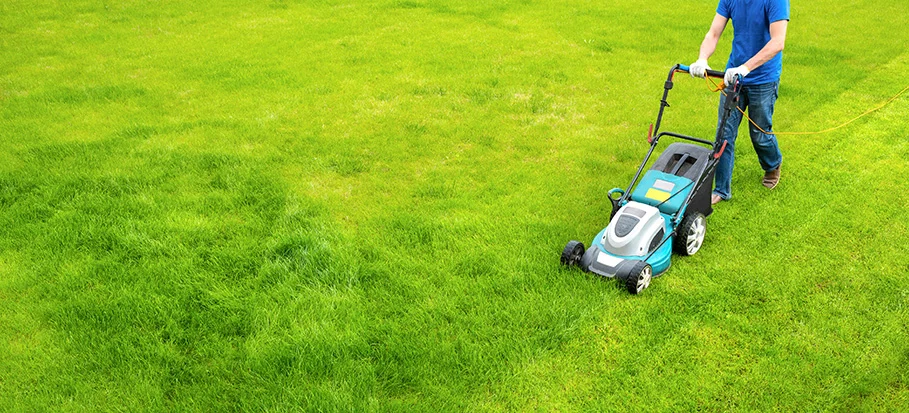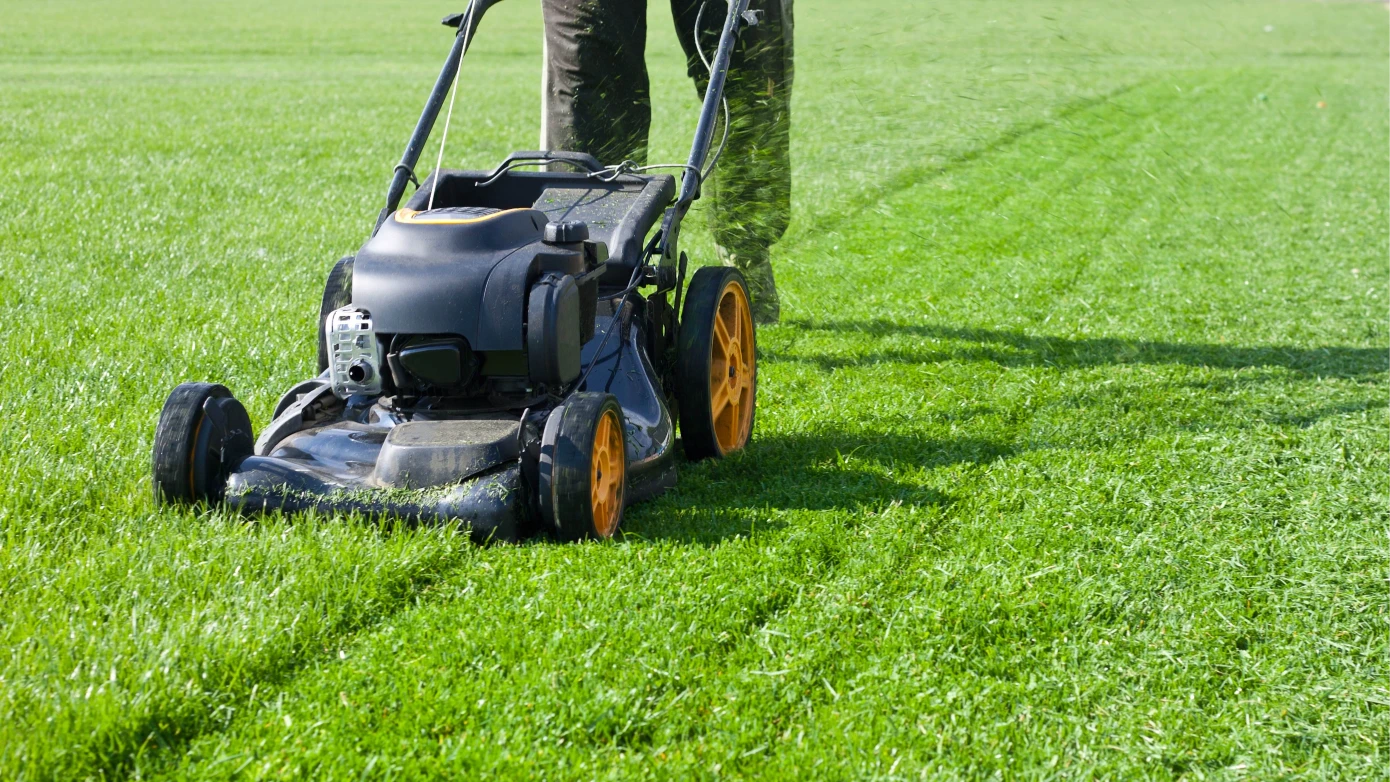Your Ideal Mowing Schedule in Lake Forest
- Blog
- Your Ideal Mowing Schedule in Lake Forest
A well-kept lawn adds beauty to your home, but keeping it that way takes time and effort. Between work, family, and everyday tasks, it’s easy to push mowing to the bottom of the to-do list. Then, before you know it, your grass is overgrown. On the other hand, cutting it too often can weaken your lawn and make it more vulnerable to heat and disease. So, how do you find the right balance?
For homeowners in Lake Forest, Orange County, maintaining a healthy lawn comes with unique challenges. The warm climate means grass grows quickly for most of the year. But seasonal changes, watering habits, and even the type of grass you have all play a role in how often you should mow. With the right schedule, you can keep your lawn looking great without spending all your free time behind a mower.
This guide breaks down the best mowing practices for homeowners in Lake Forest. You’ll learn how often to cut your grass, why timing matters, and how to avoid common lawn care mistakes. Whether you’re trying to save time or simply want a healthier, greener yard, you’ll find everything you need right here.
Recommended Mowing Schedule for Lake Forest, Orange County
Spring & Summer
During spring and summer, your lawn grows at its fastest. With warm temperatures and longer days, the grass thrives and needs regular mowing to stay healthy. If you let it grow too long, it becomes harder to manage, leading to uneven cuts and patchy areas.
So, how often should you mow your lawn in these months? For most warm-season grasses, mowing every 7 to 10 days works best. Some fast-growing varieties might even need a trim twice a week. The key is to never cut off more than one-third of the grass blade at a time to keep your lawn healthy (1).
Fall
As the temperatures cool, your grass won’t grow as quickly as it did in summer. You’ll notice it needs fewer trims, making this a great time to adjust your mowing routine. Cutting too often can weaken the lawn just before winter, so it’s best to let it grow a bit longer.
How often should you cut your grass in the fall? Every 10 to 14 days is usually enough. The goal is to keep the grass at a healthy height without stressing it before winter dormancy. Letting it stay slightly taller helps protect the roots and retain moisture.
Winter
During winter, grass growth slows down significantly or stops altogether, depending on the weather. In Lake Forest, Orange County, some lawns might keep a little growth, but for the most part, this is the season when mowing isn’t needed as often.
So, how often do you mow the lawn in winter? In most cases, you can skip mowing entirely or do it once a month if the grass still grows slightly. Cutting it too short in cold weather can weaken the lawn, making it more prone to damage.
Instead of mowing, winter is a great time to focus on other lawn care tasks. Keep your mower maintained, clear any debris from your yard, and prepare for spring growth. That way, when the warmer months return, your lawn will be in the best shape possible.
Best Practices for a Healthy Lawn
Ideal Mowing Height
Cutting your grass too short might seem like a time-saver, but it can do more harm than good. When you mow too low, the grass struggles to absorb sunlight and develop strong roots. A weak lawn is more likely to dry out, turn brown, or get overrun by weeds.
The general rule is to avoid cutting more than one-third of the grass blade at a time. Keeping your lawn at the right height helps it stay thick, green, and resilient—just like the well-maintained lawn you’ll find at Lake Forest Sports Park.

Sharp Blades Matter
Mowing with dull blades is like cutting hair with blunt scissors—it leaves rough, uneven edges. Instead of a clean cut, dull blades tear the grass, causing frayed tips that turn brown. This not only makes your lawn look messy but also makes it more vulnerable to disease and pests.
Sharpening your mower blades regularly ensures a precise cut that keeps your grass strong. If you notice jagged or discolored edges after mowing, it’s a sign your blades need attention. A sharp blade slices cleanly, helping your lawn heal quickly and stay vibrant.
Time of Day to Mow
The time of day you mow can affect how your lawn looks and how well it recovers. Mowing in the middle of the day under direct sunlight can stress the grass, making it more prone to drying out. On the other hand, mowing too late in the evening can leave moisture trapped overnight, increasing the risk of disease.
So, when’s the best time? Mid-morning, between 8 and 10 a.m., is great. In the morning, wait until the dew dries to avoid clumping and uneven cuts.
When planning how often you should cut your lawn, timing matters just as much as frequency. Mowing at the right time reduces stress on your grass and gives you better results with less effort.
Grass Clippings: Leave or Bag?
After mowing, you might wonder whether to bag your grass clippings or leave them on the lawn. While bagging keeps things looking neat, it also removes valuable nutrients that could go back into the soil.
Mulching—leaving the clippings on the grass—acts as a natural fertilizer. As they break down, clippings return nitrogen and moisture to the soil, helping your lawn grow stronger. In fact, clippings are a valuable source of nutrients, so you can often use less nitrogen fertilizer when you recycle them back into the lawn (2). This simple habit supports healthier grass and can cut down your need for extra fertilizers.
Now that you know how often you should cut grass and how to take care of it, keeping your lawn healthy and well-maintained will be much easier. By following the right mowing schedule, using proper techniques, and adjusting for the seasons, you can achieve a lush, green yard with less effort. But if finding the time to mow regularly feels like a challenge, you don’t have to do it alone.
Your Lawn Deserves the Best—Let’s Make It Happen!
A healthy, well-maintained lawn doesn’t have to take up all your time. With the right mowing schedule and proper care, you can keep your yard looking great without the stress.
However, even with the best intentions, keeping up with regular mowing can be a challenge. Life gets busy, and skipping just a couple of weeks can leave your lawn overgrown and unmanageable. If you need help with lawn care in Lake Forest, CA, you’re on the right page. At Land Disview, we understand local grass types, seasonal changes, and what it takes to keep your yard looking its best all year.
Why spend your weekends mowing when a professional can do it for you? Whether you need routine mowing, seasonal maintenance, or expert advice, we’re here to help. Contact us now and enjoy a greener, healthier lawn—without the hassle!
References:
1.University of California Agriculture and Natural Resources | The UC Guide to Healthy Lawns
https://ipm.ucanr.edu/TOOLS/TURF/ESTABLISH/onethird.html
2.University of Minnesota Extension | What to do with lawn clippings
https://extension.umn.edu/lawn-care/what-do-lawn-clippings?utm_source=chatgpt.com


